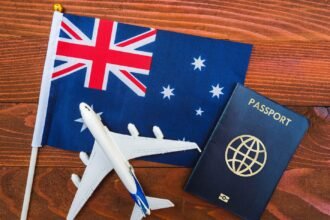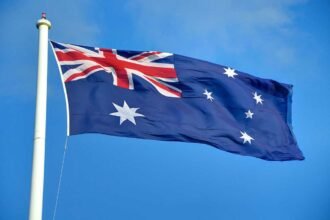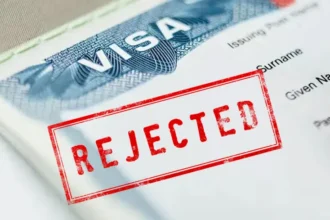Australia has long been recognized as one of the world’s leading countries in offering protection and resettlement opportunities for refugees fleeing persecution, war, and violence. The nation’s humanitarian program reflects a strong commitment to international refugee protection principles and a dedication to providing new beginnings for individuals who can no longer live safely in their home countries. Understanding Australian humanitarian visa options for refugees is crucial for anyone seeking safety and a stable future in Australia. This article explores the various types of humanitarian visas, eligibility requirements, application processes, and essential guidance for refugees and sponsors hoping to navigate this complex but vital immigration pathway.
Overview of Australia’s Humanitarian Program
The Australian Government manages its humanitarian program through the Department of Home Affairs. This program serves two main purposes: first, to resettle refugees and others in humanitarian need from overseas, and second, to provide onshore protection for people already in Australia who face persecution if they return home. Each year, Australia allocates a specific number of visas to individuals and families under different categories of the Humanitarian Program. The annual intake usually includes thousands of people from regions affected by conflict, such as the Middle East, Africa, and Asia. More information about the program’s goals and visa options can be found on the Department of Home Affairs official website.
Key Principles Behind Australia’s Refugee Policy
Australia’s refugee policy operates on several humanitarian principles. The country recognizes the right of individuals to seek asylum and ensures that decisions about refugee status are made according to international standards, including the 1951 Refugee Convention and its 1967 Protocol. The policy also emphasizes:
- Protection of those at risk of persecution.
- Family reunification, ensuring refugees can be joined by close relatives.
- Collaboration with the United Nations High Commissioner for Refugees (UNHCR) in identifying and prioritizing cases for resettlement.
- Community engagement through sponsorship and integration programs.
These principles guide Australia’s approach to humanitarian migration and ensure that resettlement remains both compassionate and well-structured.
Categories of Australian Humanitarian Visas
Australia offers several humanitarian visa options designed to meet different refugee situations. These are broadly divided into two groups: offshore humanitarian visas and onshore protection visas. Each category has specific eligibility criteria and processes.
Offshore Humanitarian Visa Options
These visas are for people who are outside Australia and in need of resettlement due to persecution or significant harm in their home country.
Refugee Category (Subclass 200)
This visa is for people identified by the UNHCR as refugees and referred to Australia for resettlement. Applicants under this category are typically individuals who cannot return to their home country and have no durable solution in the country where they currently reside.
Eligibility Criteria:
- Must be recognized as a refugee under the UNHCR’s mandate.
- Must be living outside both their home country and Australia.
- Must not have any durable resettlement options elsewhere.
Successful applicants can live permanently in Australia, access social security, education, and healthcare, and apply for Australian citizenship after fulfilling residence requirements.
In-Country Special Humanitarian Program (Subclass 201)
This visa applies to individuals still living in their home country but facing persecution. Due to its complexity and risk factors, it is granted only in exceptional circumstances.
Eligibility Criteria:
- Must be subject to persecution in their home country.
- Must have no opportunity to relocate safely within that country.
- Requires support from the Australian government or international organizations.
Emergency Rescue Visa (Subclass 203)
This visa provides rapid resettlement for refugees who face immediate and life-threatening danger. The UNHCR usually refers such cases to Australia for urgent processing.
Eligibility Criteria:
- Must meet the refugee definition.
- Must be at immediate risk of harm.
- Must be recommended by the UNHCR for emergency resettlement.
Because of the urgency involved, these visas are processed more quickly than other humanitarian visas.
Woman at Risk Visa (Subclass 204)
This visa supports women who are outside their home countries, are recognized as refugees, and lack the protection of a male relative. Many applicants have experienced gender-based violence or discrimination.
Eligibility Criteria:
- Must be a woman recognized as a refugee by the UNHCR.
- Must be without the protection of a close male relative.
- Must be in danger of victimization or harassment.
This visa not only provides resettlement but also additional assistance to help women and their families integrate safely into Australian communities.
Special Humanitarian Program Visa (Subclass 202)
The Special Humanitarian Program (SHP) is for individuals who are not necessarily recognized as refugees by the UNHCR but face substantial discrimination or human rights abuses. Applicants must be sponsored by an eligible Australian citizen, permanent resident, or organization.
Eligibility Criteria:
- Must be outside Australia and their home country.
- Must experience substantial discrimination or human rights violations.
- Must have a proposer (sponsor) in Australia willing to support their settlement.
The SHP is one of the most utilized humanitarian pathways, enabling communities in Australia to reunite with or assist relatives and friends displaced by conflict or persecution.
Onshore Protection Visa Options
These visas are for people who are already in Australia and seek asylum because they fear persecution or harm if they return home.
Protection Visa (Subclass 866)
The Protection Visa is the main onshore visa for individuals who have arrived in Australia legally (e.g., on a visitor or student visa) and are seeking asylum.
Eligibility Criteria:
- Must be in Australia legally at the time of application.
- Must meet the refugee or complementary protection criteria under Australian law.
- Must not be subject to certain bars or exclusions (e.g., certain visa conditions).
Holders of this visa can stay in Australia permanently, work, study, and eventually apply for citizenship.
Temporary Protection Visa (Subclass 785) and Safe Haven Enterprise Visa (Subclass 790)
These visas are for people who arrived in Australia illegally by boat and are found to be refugees or in need of protection. They are temporary visas with specific conditions.
Temporary Protection Visa (TPV):
- Allows stay in Australia for up to three years.
- Provides access to work rights, Medicare, and certain social benefits.
- Holders can apply for renewal before expiry.
Safe Haven Enterprise Visa (SHEV):
- Valid for up to five years.
- Encourages refugees to live and work in regional Australia.
- Can provide a pathway to other visas if certain criteria are met.
These temporary visas are part of Australia’s broader border protection policies but still provide essential protection for recognized refugees.
Application Process for Humanitarian Visas
The application process varies depending on the visa type, but generally includes several key steps.
- Determine Eligibility: Review the visa subclass that best suits your situation and ensure you meet the basic requirements.
- Prepare Documentation: Collect identification papers, evidence of persecution or discrimination, relationship documents (if applicable), and financial or sponsorship details.
- Submit Application:
- For offshore visas, applications can be submitted online or through paper forms to the Australian immigration office or UNHCR.
- For onshore visas, applicants must apply online through the Department of Home Affairs website.
- Attend Interviews or Provide Additional Information: Applicants may be asked to attend interviews, provide biometrics, or submit additional documents to support their claims.
- Wait for a Decision: Processing times vary based on the complexity of the case, country of origin, and annual visa quotas.
- Post-Approval Steps: Successful applicants receive settlement assistance, including orientation, language training, and housing support through the Australian Government’s Humanitarian Settlement Program.
Common Reasons for Visa Refusal
Despite Australia’s humanitarian commitment, not all applications are successful. Common reasons for refusal include insufficient evidence of persecution, inconsistencies in statements, or failure to meet eligibility criteria.
To avoid refusals:
- Provide detailed and consistent information about your situation.
- Include supporting evidence such as witness statements, police reports, or letters from humanitarian organizations.
- Use professional assistance from registered migration agents to prepare a strong application.
If your application is refused, you may be eligible to appeal the decision through the Administrative Appeals Tribunal (AAT).
Sponsorship and Proposer Requirements
For the Special Humanitarian Program (Subclass 202), applicants must have a proposer in Australia. Sponsors can be:
- Australian citizens or permanent residents.
- Eligible New Zealand citizens.
- Australian organizations, such as community or religious groups.
Proposers must demonstrate the ability to support the applicant during their initial settlement period, including housing, financial support, and social integration. The sponsorship process helps ensure refugees have a support network upon arrival.
Rights and Benefits for Humanitarian Visa Holders
Successful humanitarian visa holders enjoy many of the same rights as Australian permanent residents. These include:
- The right to live, work, and study in Australia indefinitely.
- Access to Medicare and public healthcare.
- Access to education and training programs.
- Eligibility for certain social security benefits.
- The right to apply for citizenship after fulfilling residence requirements.
- The ability to sponsor eligible family members to join them in Australia.
For temporary protection visa holders, benefits are more limited, but still include work rights and essential health services.
Integration and Settlement Support
Australia’s commitment to refugee resettlement extends beyond visa approval. Newly arrived refugees receive comprehensive settlement assistance through programs like the Humanitarian Settlement Program (HSP). Services include:
- Orientation to Australian laws, culture, and daily life.
- English language training through the Adult Migrant English Program (AMEP).
- Help with finding employment and education opportunities.
- Housing assistance and financial literacy support.
- Community engagement and cultural integration initiatives.
This holistic support ensures refugees can rebuild their lives and contribute meaningfully to Australian society.
Refugee Family Reunion and Long-Term Options
Family reunification is a cornerstone of Australia’s humanitarian policy. Refugees who have settled in Australia can apply to bring close family members through humanitarian or family stream visas. The government prioritizes applications involving spouses, children, and dependent relatives who remain in vulnerable conditions overseas.
Long-term, many humanitarian visa holders successfully transition to Australian citizenship, reflecting Australia’s belief in helping refugees build permanent, secure futures.
Challenges Faced by Refugees During Application
While Australia’s humanitarian system is robust, applicants often face challenges such as:
- Complex paperwork and long processing times.
- Limited access to legal advice in refugee camps or conflict zones.
- Difficulty proving persecution due to lack of documentation.
- Emotional stress and uncertainty during waiting periods.
To mitigate these challenges, refugees are encouraged to seek help from authorized migration agents, humanitarian NGOs, or legal aid organizations specializing in refugee law.
Australia’s Role in Global Refugee Protection
Australia’s humanitarian resettlement efforts are among the largest per capita globally. The country works closely with the UNHCR and international partners to identify the most vulnerable populations, including women at risk, children, and victims of torture. By providing safe haven, Australia upholds its obligations under international humanitarian law and demonstrates solidarity with the global refugee community.
Conclusion
Understanding Australian humanitarian visa options for refugees is essential for anyone seeking safety and a new life in Australia. The system, while complex, provides hope and opportunity for thousands each year who are escaping war, persecution, and discrimination. From permanent resettlement visas like the Refugee Subclass 200 to temporary protection options like the TPV and SHEV, Australia offers multiple pathways to security and belonging. By preparing thorough applications, providing consistent evidence, and seeking professional guidance, refugees and their sponsors can significantly improve their chances of success.
Australia’s humanitarian program is not only a testament to the country’s values of compassion and fairness but also a lifeline for people in desperate need of refuge. For detailed and updated information on eligibility, documentation, and application procedures, applicants should always refer to the Australian Department of Home Affairs website. With the right guidance and perseverance, refugees can find safety, stability, and a chance to rebuild their lives in Australia—a nation known for its diversity, opportunity, and respect for human dignity.



